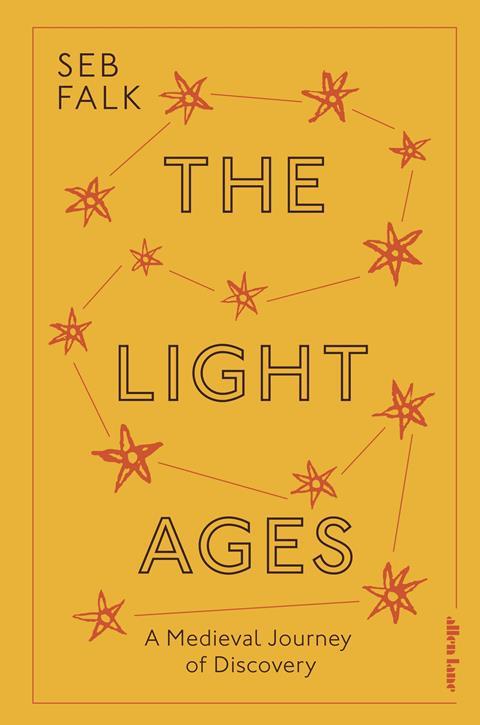Seb Falk
Allen Lane
2020 | 416pp | £20
ISBN 9780241374252

Buy this book on Amazon.co.uk
Buy this book on Bookshop.org
When we consider science in the distant past, most people generally think one of two things: that it didn’t exist or that it was facilitated almost solely by high born men experiencing sudden Eureka moments of brilliance. Even though logic tells us that either of these imaginings must clearly be false, it’s hard to shake the image of Archimedes in his bathtub, or Newton being beaned in the head by a wayward apple, and there’s a certain appeal to thinking of the history of science as a series of bite size, Hollywood-worthy climaxes.
It is this misconception that Seb Falk’s The Light Ages strives to correct. The book takes us back all the way to the 14th century, following in the footsteps of a Benedictine monk called John Westwyk as he explores the scientific world of his day. Falk starts with the basics, explaining how early mathematicians were able to complete complex calculations, and how everyday people used the sun and stars to chart time, and continues all the way through to Westwyk’s development of a ‘computer’ that could track the movement of the planets. Throughout the narrative, Falk builds up a picture of not just the state of science in the 1300s, but also of its people and the lifestyles they enjoyed.
In places, The Light Ages is quite a lot to take in at once. Much of the book’s mathematical and astronomical explanations are very dense, and to someone unfamiliar with the subject matter it can be easy to lose the thread of what’s being discussed. In particular, I found some of the early descriptions of how individuals tracked the movements of stars by eye difficult to visualise, and while the book does provide some diagrams to help, it still gave me pause.
Where the book truly excels is in its sense of atmosphere, bringing you into the realities of medieval life. Falk closes his prologue by referencing a quote from L P Hartley’s The Go-Between: ‘The past is a foreign country. They do things differently there.’ That is undoubtedly true, and The Light Ages does a brilliant job of highlighting how – and more importantly why – medieval science differed from what we might recognise today.
For all the differences, however, as I made my way through the book, I found myself thinking of a different quote entirely, this time from William Faulkner: ‘The past is never dead; it’s not even past.’ Despite the 700 years separating us from John Westwyk, echoes from the work that he and his fellow scientists did still resonate in our present, right down to the very words we use to describe the world around us. The term digital, for example, originates from the Latin word digiti (fingers) in reference to how ancient mathematicians developed techniques that used their own hands to work through complex calculations. The word calculus is descended from the pebbles (in Latin calculi) that were used in abaci and counting boards.
Combined with the richness of historical information Falk presents in The Light Ages, this book is a delightful peek at our own roots as scientists, and is certainly worth a read for anyone interested in the truth behind the so-called dark ages.












No comments yet